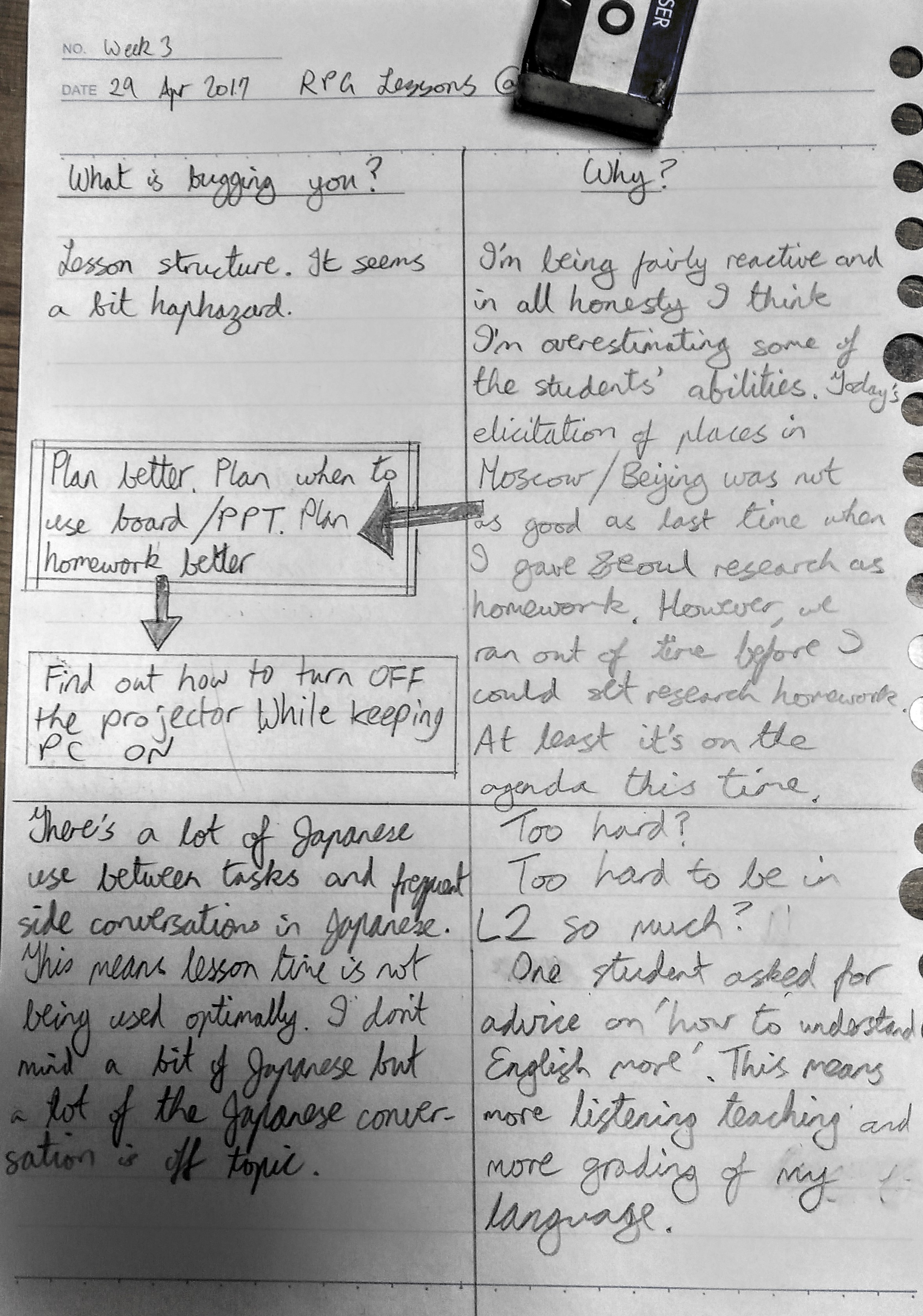Ooh, 21st Century Skills. Apparently critical thinking is one of these but it constantly exasperates me when I see uncritical praise of EdTech in (English) language teaching. Instead of jumping on the new thing, how about some consideration of the following points.
Web applications should involve minimal and preferably no sign-up or tracking.
It should be a personal choice how far one wishes to be tracked and data-mined by third parties. When teachers use services that require sign-up or login using social media we are effectively coercing students to surrender their privacy. If we require use of Facebook logins (and not everyone has one) we are requiring students to be tracked on their computers. If we require Facebook logins on a phone, we require tracking and have given the rights to Facebook to record students by audio or camera without notice (see Facebook terms and conditions, privacy policy if concerned/you don’t believe me).
Sign-ups that require login for monitoring student progress are fine, and students should not feel compelled to unconditionally share this information with others, including teachers. The same liberty as the choice to remain silent in lessons should be extended to use of internet-based services.
This also means that having students upload to YouTube, Instagram, etc. be limited. If uploads are required, an institutional login should be used, although this is imperfect and a private server would be better. This requires greater internet/computing abilities than many have, though it is possible to learn such skills in a weekend. Is it possible for students to gain such time to be critical of internet privacy issues.
Technology should be controlled by the user, not the vendor.
Students should know whether content created using software belongs to them or the vendor. They should know whether the vendor has access to their data, including read/write/sharing permissions. They should be free to refuse this.
Students should not be required to use their own data transfer budget unless agreed prior to the course.
This is a hidden cost. Institutions/organisations should provide secure Wi-Fi.
Technology should be a last resort, not a first.
It is tempting to load a lesson with flashing lights, bells and such, but unless real communication and actual learning occurs, the technology would appear to waste time.
Category: Pedagogy
Learner Autonomy ought to be Awesome not Anomie
Ooh, Marc. Your classes always look like you give your students loads of freedom.
Yes, it does look that way but sometimes I still feel like I’m spoonfeeding. So today, I ditched my plan and tried an experiment.
To prepare for a discussion on health. I set stations that the learners would practice at.
- Vocabulary brainstorming at the board.
- Discussion planning.
- Fluency practice.
- Reading.
- Mini-discussion practice.
I suspected that the learners would just pick out single words. I later elicited collocations.

Or functional language planning. What can you say to open a discussion, control a discussion, agree, disagree politely, change the subject and end the discussion. Not amazing.
Teacher led choral, response drills, function drills. Popular with the learners but not my bag. Useful to an extent.
Read the handout then discuss it. Response task on the back. Reading has a gloss and few if any ‘hard’ words.
Set a task (actually part of the exit task). The post-task was to report to me three best balances of nutrition and taste for the discussion.
How did it go?
Well, I’d be lying if I said everything was amazing. The vocabulary was very successful with my morning classes, and OK with the afternoon class. The reading was basically spot on and the mini discussions went well. The discussion planning kind of sucked a bit. Some learners took over and derailed the activity and it took a while to get back on track.
All in all, not bad, though. I’ll probably try something similar again but I definitely want to tweak the language planning, perhaps with a handout. But that takes the autonomy away.
Here Be (Dungeons and) Dragons: 7
Back to the Campaign

I’m not satisfied with the RPG courses at the moment but I can see what it is that I want. I want to be able to just put everything in place like I have five years experience of RPGs rather than feeling my way blind.
So what would I do with all my unearned experience? Well, I think I would like to delegate some of the Dungeon Master responsibilities to the students. Learner Autonomy is a good thing. The only problem is only about a handful are capable of putting together a scenario and scoring. Because Japan is a groupist culture, this means I would run the risk of putting noses out of joint.
Another thing that I hadn’t thought through properly is item functions. The class at UOT has won some items but LCST has had no items in the game, yet. I was considering using these items to fiddle the game and let conscientious learners get high scores but in all honesty all the students are conscientious enough to keep me happy. Still, a few things could make it more interesting.
So what I am going to do is add items in the next few stages and have clear benefits to them.
I will ask of anyone wants Dungeon Master homework. I might even make a tutorial video about using Google Slides, too.
Read Here be (Dungeons and) Dragons previous ‘chapters’: 1, 2, 3, 4, 5, 6
Here be (Dungeons and) Dragons 6: Interlude

Interlude, or stopping the game and assessing.
Who’s assessing?
Well, funny you should say that. At Ladies College of Suburban Tokyo (LCST) I went around two classes of twenty odd, checking portfolios in progress while the students planned repeat tasks. I assigned them to re-record the most difficult task of the last 4 weeks, listen to the new one, listen to the previous one and judge which is better and how or why? Also, it gives a chance to see what still needs to be done. These students are a bit more savvy with academic skills as well as IT, and I don’t have access to a CALL room so I didn’t run a lesson on PowerPoint and OneNote or Google Apps to collate work.
The students’ work outside class has been a good mix of practice with elllo.org and dreamreader.net but also a lot of indiscriminate grammar drills from high-school textbooks, despite my urge to study grammar from graded readers, listening or something with a lot of context or cotext.
At University Outside Tokyo (UOT), I had more students than usual after a prompt of “come to class or face failing again”. Some students were savvy, others not so. I showed how to use PowerPoint to gather pictures and annotate them for vocabulary and how to drag and drop multimedia files. I was hoping this would take about 50 minutes but young people in Japan, while mobile literate are sometimes not very computer literate. They’ll redo tasks at the start of the next lesson.
At least I know now what the demands are, how much time it takes me to get around everyone to give feedback and the students know to make better use of grammar drills and such.
Read Here be (Dungeons and) Dragons previous ‘chapters’: 1, 2, 3, 4, 5
Reading Gallery Lesson – quick prep activity

Image from Night of the Living Dead, George A. Romero 1968 – no copyright.
This is an activity similar to one I did before from this TBLT Task Ideas Linoit Board where you can get students to choose one thing from a set of limited options. For this lesson I chose eight films from the top 50 list on imdb.com and copied and pasted the story synopsis into text files. You could get your students to choose. I didn’t because I was a bit short of time for various reasons. I then set my students in groups of four to choose one film to watch together.
I ran the text files through TagAnt to tag them for parts of speech in AntConc corpus concordancer. You’ll want the TagAnt tag list handy to check grammar in AntConc.
Open the tagged files in AntConc. Check the clusters, N-grams and word frequencies (including tags). In my mini corpus I found that the most key grammar was present simple passives and also there were a lot more proper nouns than expected. I kept this in mind for Focus on Form and actually did need to focus on form on passives.
Print the untagged text files after changing fonts and tidying them in your favourite word processor. Print, cut, and pin/stick to the wall.
I had my students in groups of four take rotating turns to read for: new vocabulary, storyline, setting, and characters. For odd numbers – groups of five with two assigned to new vocab or groups of three with setting and characters both assigned to one student. Dictionary checking halfway through the task and again at the end. They then read and choose which film to watch (or which trailer to watch as homework and write about in their learning journals).
A lot of my students chose a film because ‘it was the only film we understood and liked’, which is fine, in my opinion. I told them that I don’t choose to watch films that I don’t understand the story synopses of. I also had borne in mind the number of proper nouns counted in the corpus so remembered to tell students who looked a bit stuck that if the difficult word was capitalised in the the middle of a sentence it was probably a place or a person.
It wasn’t bad but it wasn’t as good as I expected. Even with short texts. the lesson was a bit hard. Some pictures of the films probably would have been useful. Anyway, you live and learn, don’t you?
Here be (Dungeons and) Dragons 5
The crap lesson
This week at LCST the task was to ask which metro station a sightseeing spot is near. Unfortunately the lesson wasn’t very good. The first steps of the task were very poor. It wasn’t helped by assuming students would be able to just ask where a foreign place is. The complexity of the task needed to be thought about first.
I suppose this needs to be key in task design. Perhaps a task design process should be considered. A preliminary idea is:
Task Design Process
-
Idea
-
What language functions are necessary?
-
What different skills are needed?
-
What is likely to occur?
-
What can be done to scaffold to enable best-case scenarios?
-
Review
-
Check what could go wrong at each step.
So, anyway, after a focus on form on questions and longer answers, I’d say the task was finally done well, but I’ll check over everything so far in next week’s review lesson.
Read Here be (Dungeons and) Dragons previous ‘chapters’: 1, 2, 3, 4
Read the future chapters 6
Here be (Dungeons and) Dragons 4
Here be (Dungeons and) Dragons 3
The Wrath of the Math
“Huh?”
“Your points are 2 for taking a taxi, plus 1 if you told the driver where exactly to let you out. Then roll the D4. Add courage points to the D4. Divide them by 5.”
I should have seen this coming. How often do you see any English for arithmetic in EFL materials? Never. How many of these ladies at Ladies’ College of Suburban Tokyo (LCST) have played RPGs before? None, so the D4 terminology from the first lesson went in one ear and out the other of some students.
Next time I will provide a little bit of Focus on Form on the arithmetic terms and hope that our dining role plays go well, because other than the maths, it was a good lesson.
Read Here be (Dungeons and) Dragons previous ‘chapters’: 1, 2
Read the future chapters 4, 5, 6
Here be (Dungeons and) Dragons 2

With last week’s descent into the ‘dungeon’ being somewhat gung-ho, this week was a wake-up call. The group at University Outside Tokyo (UOT) changed. Our one woman was absent along with two other male players. Perhaps this is what led to one player stepping over the line or testing the boundaries of what is and isn’t acceptable in the classroom.
Our game at UOT is based on interacting with a non-player character (NPC) who is a foreign exchange student. This week we took him sightseeing (with our female player absent only our male NPC was in play). Unfortunately three of the players decided that a good place would be a massage parlour.
There was part of me that was close to ranting and raving. However, I didn’t. Instead, I appealed to the group’s lack of impropriety and asked if this was acceptable to them. It wasn’t. We finished the game, and after the transcription stage I called bullshit. I pulled rank as both ‘Dungeon Master’ and classroom teacher. Yes, I played my ‘Don’t be a dick!’ and ‘I grade your work’ cards. Do I feel slightly uncomfortable setting boundaries with adults? Yes, actually. Am I glad I did it? Absolutely.
There is a public transport-themed game stage next lesson with this group. I don’t think this will provide opportunities for lewd outbursts.
Read Here be (Dungeons and) Dragons previous ‘chapters’: 1,
Read the future chapters 3, 4, 5, 6
Omitting Others? A(nother) case for Dogme
During the last few months and to an extent the last year or so there have been a few bits and bobs about diversity in ELT. Two examples off the top of my head are:
The queering (or actually not) OF ELT materials by Angelos Bollas (talked about at Innovate ELT 2016 and this year’s IATEFL).
Emily Hird’s post on diversity in ELT materials (by big publishers).
All of this leads me to believe that one OF the best tools we have at our disposal as teachers is Dogme, going materials light. This gives greater opportunity to go to places prompted by the learners and teachers rather than hem in conversation by implicitly suggesting a norm in a textbook.
A case in point would be the usual heteronormative, racially homogeneous family tree. One might get into hot water from bosses in very conservative institutions. If the work is learner centred, the basis of learners’ families is the basis of discussion. The way other families are portrayed on TV and in movies often come up in questions. How many learners have divorced parents? Step-siblings? Half-siblings? LGBTQ relatives that are married or living together? Heck, even straight people merely living together is risqué on coursebook land. That’s just an example of what could come up when talking about one topic.
If you have a diversity problem in your materials, are you sure they aren’t overly simplistic? If they are overly simplistic in diversity, as well as language that learners may require to meet their communication needs, why are we pussyfooting around the deficiencies of expensive dead trees and not instead boldly using our learners’ lives to teach real life.

